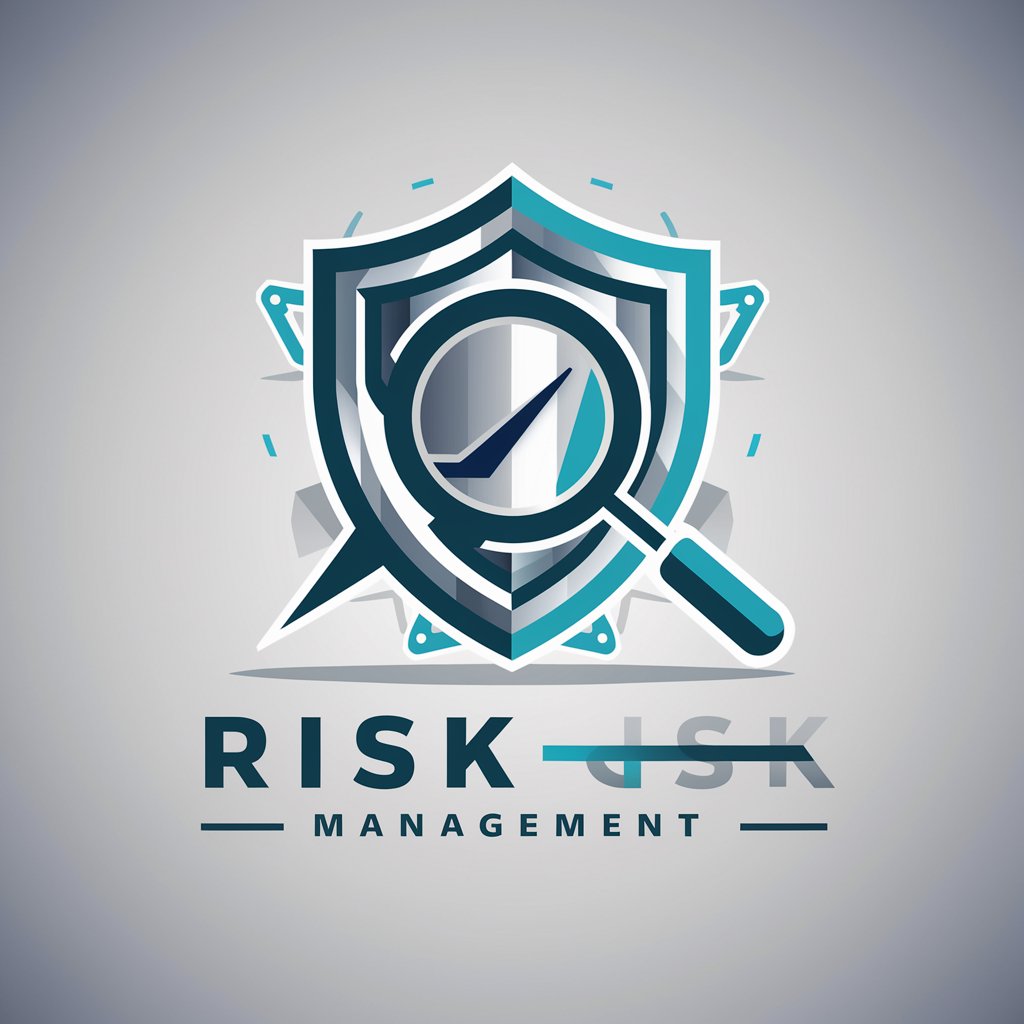Risk Management - Risk Identification & Mitigation

Welcome! Let's manage and mitigate risks effectively together.
AI-powered Risk Management Solutions
Identify potential financial risks in a new business venture...
Assess the operational risks associated with expanding into a new market...
Develop a compliance risk mitigation strategy for new regulatory requirements...
Evaluate strategic risks in merging two companies...
Get Embed Code
Overview of Risk Management
Risk Management involves identifying, assessing, and developing strategies to manage and mitigate potential risks. It aims to preemptively recognize and resolve issues that could harm an organization or individual. This process is crucial across various fields, including finance, operations, compliance, and strategy. For example, in finance, risk management might involve assessing credit risk before lending to a customer. In operations, it could mean evaluating the potential for supply chain disruptions and developing contingency plans. Powered by ChatGPT-4o。

Key Functions of Risk Management
Risk Identification
Example
Identifying potential cybersecurity threats in a tech company.
Scenario
A tech company conducts regular IT audits to identify vulnerabilities in their systems, like outdated software or weak passwords, to prevent data breaches.
Risk Assessment
Example
Evaluating the impact of market fluctuations on investments.
Scenario
A financial advisor analyzes market trends and the volatility of assets to advise clients on stable investment strategies, reducing the likelihood of significant losses.
Risk Mitigation Planning
Example
Developing contingency plans for natural disasters in a manufacturing business.
Scenario
A manufacturing company in a hurricane-prone area plans for alternative logistics routes and backup suppliers to ensure business continuity during a natural disaster.
Monitoring and Review
Example
Regularly reviewing health and safety protocols in a hospital.
Scenario
A hospital conducts frequent reviews of its health and safety procedures to adapt to new health regulations and ensure patient and staff safety.
Compliance Management
Example
Ensuring adherence to financial regulations in banking.
Scenario
A bank regularly updates its policies and trains staff to comply with evolving financial regulations, thereby avoiding legal penalties and reputation damage.
Target Users of Risk Management Services
Businesses and Corporations
These entities face operational, strategic, financial, and compliance risks. Effective risk management helps them minimize potential losses, maintain reputation, and ensure regulatory compliance.
Financial Institutions
Banks, insurance companies, and investment firms use risk management to navigate market risks, credit risks, and regulatory challenges, thus safeguarding assets and maintaining market trust.
Healthcare Organizations
Hospitals and healthcare providers apply risk management to patient care, privacy issues, and regulatory compliance, ensuring patient safety and protecting sensitive information.
Government Agencies
They use risk management for public safety, project management, and policy implementation, ensuring efficient use of resources and effective delivery of services.
Individuals
Individuals, particularly those with significant investments or assets, use risk management for personal finance, property management, and career planning to secure their financial future and manage personal risks.

How to Utilize Risk Management
Start Your Journey
Initiate your risk management exploration by visiting yeschat.ai to access a free trial, bypassing the need for logins or ChatGPT Plus subscriptions.
Identify Risks
Catalog potential risks across various dimensions such as financial, operational, compliance, and strategic within your organization or project.
Assess and Analyze
Evaluate the identified risks based on their likelihood and potential impact. Use qualitative and quantitative methods to prioritize risks.
Develop Mitigation Strategies
Formulate and implement strategies to mitigate, transfer, accept, or avoid the highest priority risks.
Monitor and Review
Continuously monitor the risk environment and the effectiveness of your risk management strategies, adjusting as necessary.
Try other advanced and practical GPTs
科技大师
Empowering Creativity with AI

Notion 智能账本
AI-powered Personal Finance Management

MediVisualizer
Bringing medical concepts to visual life.

Safety Equipment
Empower Safety with AI Insights

Seafood
Explore the ocean's bounty, powered by AI.

Aria
Master English with AI Tutoring

Чат с Дядо Коледа
Bringing Christmas magic to your chat

Lex Office Agent GPT
Empowering Legal Excellence with AI

Housekeeping
Elevate your home with AI-powered housekeeping advice.

Latex
Elevate Your Documents with AI-Powered Latex

Tower
Unlock Architectural Secrets with AI

Canadian Art Grant Guide
Empowering artists with AI-driven grant finding

Detailed Q&A on Risk Management
What is risk management and why is it important?
Risk management involves identifying, assessing, and prioritizing risks followed by coordinated and economical application of resources to minimize, monitor, and control the probability or impact of unforeseen events. It's crucial for protecting assets, ensuring organizational sustainability, and supporting informed decision-making.
How does technology enhance risk management processes?
Technology plays a pivotal role in risk management by providing advanced analytics, real-time data monitoring, and automation capabilities. These tools enable more accurate risk assessments, streamlined risk reporting, and the ability to quickly adjust to new threats.
Can you explain the difference between qualitative and quantitative risk analysis?
Qualitative risk analysis assesses risks based on their nature and the impact they might have, using a non-numerical approach. Quantitative risk analysis, on the other hand, involves numerical and statistical methods to quantify risk probabilities and impacts, offering a more precise risk evaluation.
What are some common risk mitigation strategies?
Common strategies include risk avoidance, reduction, sharing (through insurance or partnerships), and acceptance. The choice depends on the risk's potential impact, the cost of mitigation, and the organization's risk tolerance.
How often should risk management processes be reviewed?
Risk management is a dynamic process that requires regular review and adjustment. The frequency of reviews should be based on the nature of the risks and the organization's environment, but at a minimum, it should be conducted annually or after any significant change in operations or external conditions.
